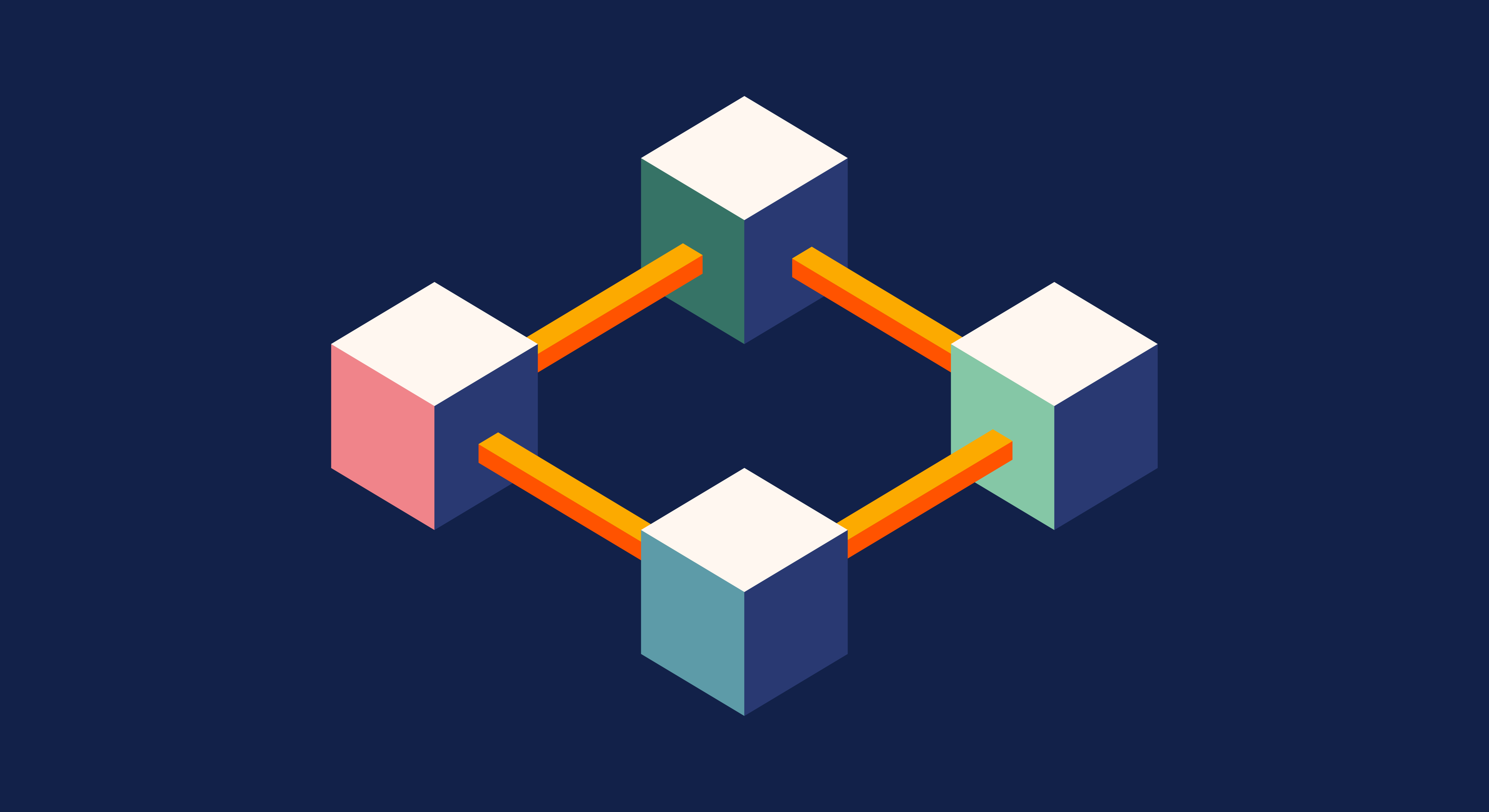Unlocking the Power of Blockchain: Understanding What Blockchain Is and How It Works for a Decentralized Future
What is Blockchain and How Does It Work? A Comprehensive Guide

Introduction
In the digital age, few innovations have garnered as much attention as blockchain technology. It’s the backbone of cryptocurrencies like Bitcoin, but its applications stretch far beyond that. From finance and healthcare to supply chain management and data security, blockchain is transforming industries and how we think about transactions and trust.
But what exactly is blockchain, and how does it work? Why is this decentralized technology being hailed as revolutionary? In this in-depth guide, we’ll unravel the complexities of blockchain, demystify its inner workings, and explore the vast potential it holds for the future.
Whether you’re a tech enthusiast, business leader, or simply curious about the next big technological leap, this post will provide you with a clear understanding of blockchain and its significance in our rapidly evolving world.
1. What is Blockchain?
At its core, blockchain is a digital ledger, a decentralized and distributed record of transactions that are maintained across multiple computers or nodes. This technology enables secure, transparent, and immutable data storage without needing a central authority like a bank or government.
Unlike traditional ledgers, blockchain relies on a peer-to-peer (P2P) network. Instead of having a single entity verify and validate transactions, blockchain uses a consensus mechanism where all participants in the network must agree on the transaction’s validity before it’s added to the blockchain.
The term “blockchain” comes from the way transactions are grouped into blocks, which are then linked together (or “chained”) in chronological order. Each block contains a list of transactions, a timestamp, and a reference to the previous block, creating a secure and transparent chain of data.
2. How Does Blockchain Work?
Understanding how blockchain works involves delving into a few essential processes. Let’s break down the mechanics step-by-step:
a. Transaction Initiation
The blockchain process starts when someone initiates a transaction, which could involve transferring cryptocurrency, signing a smart contract, or exchanging data. This transaction is represented as a data block and is shared with every node in the network.
b. Block Creation
Once a transaction is initiated, it’s bundled together with other transactions to form a new block. This block contains vital information, including the transaction details, the timestamp, and a cryptographic hash of the previous block, ensuring continuity within the chain.
c. Consensus Mechanism
Before this new block can be added to the blockchain, the network participants must reach a consensus. This means that a majority of the nodes must validate the block’s contents through specific mechanisms like Proof of Work (PoW) or Proof of Stake (PoS). These mechanisms ensure that the transactions are legitimate, preventing double-spending or fraud.
d. Block Addition to the Chain
Once consensus is reached, the validated block is added to the blockchain, where it becomes a permanent part of the ledger. This block is now linked to the previous one, forming an unbreakable chain. Each subsequent block reinforces the security of the previous blocks, making it virtually impossible to alter the blockchain’s history.
e. Transaction Completion
After the block is added, the transaction is considered complete and becomes visible to all participants on the blockchain. Since blockchain data is decentralized and immutable, anyone can verify the transaction, ensuring transparency and trust.
3. Key Components of Blockchain Technology
Blockchain’s robust nature stems from several key components that work together to create a secure and reliable system:
a. Decentralization
Unlike traditional centralized systems, blockchain operates on a decentralized network. There is no single point of control; instead, power is distributed among all network participants. This reduces the risk of a single point of failure or control, making blockchain more resilient.
b. Cryptography
Blockchain relies heavily on cryptographic techniques to ensure security. Each transaction is encrypted, and blocks are linked through cryptographic hashes. This makes it nearly impossible for any block to be tampered with without altering all subsequent blocks, which would require consensus from the majority of the network.
c. Consensus Algorithms
To validate transactions and add new blocks to the chain, blockchain uses consensus algorithms like Proof of Work (PoW) or Proof of Stake (PoS). These mechanisms ensure that participants agree on the validity of transactions and maintain the integrity of the blockchain.
d. Smart Contracts
Smart contracts are self-executing contracts with the terms of the agreement directly written into code. These contracts automatically execute and enforce themselves when predefined conditions are met, eliminating the need for intermediaries and increasing efficiency.
4. Types of Blockchains: Public vs. Private
Blockchain technology can be categorized into two main types: public and private blockchains.
a. Public Blockchains
Public blockchains are open to everyone and fully decentralized. Anyone can join the network, participate in consensus, and view the transaction history. Cryptocurrencies like Bitcoin and Ethereum operate on public blockchains, making them transparent and secure but slower due to the large number of participants.
b. Private Blockchains
Private blockchains, on the other hand, are restricted and permissioned. Only authorized participants can join and engage in consensus mechanisms. These blockchains are often used by businesses and organizations for internal purposes, providing more control and faster transaction times but sacrificing the level of decentralization found in public blockchains.
5. Key Benefits of Blockchain
Blockchain’s popularity stems from the numerous benefits it offers:
a. Security and Transparency
Blockchain provides a secure and transparent way to record transactions. Since each block is encrypted and linked to the previous one, it’s nearly impossible to alter the blockchain without the network noticing.
b. Decentralization
With no central authority, blockchain removes intermediaries and allows for peer-to-peer transactions. This not only reduces costs but also increases resilience and efficiency.
c. Immutability
Once a block is added to the blockchain, it cannot be changed. This immutability ensures a trustworthy and tamper-proof record of transactions, reducing the risk of fraud.
d. Cost Efficiency
By eliminating intermediaries and automating processes through smart contracts, blockchain reduces operational costs for businesses and streamlines transactions.
e. Enhanced Traceability
Blockchain provides a transparent and traceable record of transactions, which is particularly useful for industries like supply chain management and logistics. Every step in a product’s journey can be tracked, ensuring accountability.
6. Applications of Blockchain Technology Across Industries
Blockchain’s potential goes far beyond cryptocurrency. Here are some of the industries being transformed by blockchain:
a. Finance
Blockchain’s decentralized nature is revolutionizing the financial industry by enabling faster, more secure transactions without the need for intermediaries like banks. Digital currencies, cross-border payments, and decentralized finance (DeFi) are just the beginning.
b. Healthcare
In healthcare, blockchain is being used to secure patient data, streamline medical records, and improve drug traceability. By enabling transparent and secure data sharing, blockchain can improve efficiency and trust between healthcare providers and patients.
c. Supply Chain
Blockchain allows for real-time tracking of goods in the supply chain, improving transparency and reducing fraud. Companies can trace the origin and journey of products, ensuring that supply chain processes are ethical and compliant.
d. Voting Systems
Blockchain-based voting systems can provide transparent, secure, and immutable election results. This could potentially eliminate voter fraud and increase public trust in the democratic process.
e. Intellectual Property
For creators and artists, blockchain provides a way to protect intellectual property rights through tokenization and smart contracts. Blockchain can verify ownership and ensure that creators receive royalties for their work.
7. Challenges and Limitations of Blockchain
While blockchain technology offers numerous advantages, it also faces several challenges:
a. Scalability
One of the main challenges of blockchain is scalability. Public blockchains, in particular, can be slow and inefficient as the network grows due to the time-consuming consensus mechanisms.
b. Energy Consumption
Some consensus mechanisms, like Proof of Work (PoW), require significant computational power, resulting in high energy consumption. This has raised concerns about blockchain’s environmental impact.
c. Regulation
Blockchain operates in a largely unregulated space, which presents legal challenges. Governments and regulators are still trying to figure out how to handle blockchain’s decentralized nature, particularly in sectors like finance and data security.
d. Adoption
Despite its potential, blockchain adoption remains slow in many industries. Businesses must overcome technical and cultural hurdles to integrate blockchain into their operations.
8. The Future of Blockchain: Where Is It Headed?
Blockchain is still in its early stages, but its future looks promising. As more industries recognize its potential, blockchain technology will likely see widespread adoption. Emerging trends such as decentralized finance (DeFi), non-fungible tokens (NFTs), and blockchain-based identity management will continue to drive innovation.
Moreover, the development of more efficient consensus mechanisms, like Proof of Stake (PoS) and advancements in Layer 2 solutions (which aim to improve scalability), will help address some of blockchain’s current challenges. The integration of blockchain with artificial intelligence (AI) and the Internet of Things (IoT) will also open new doors for innovation and efficiency.
Conclusion and Call to Action
Blockchain is more than just a buzzword—it’s a revolutionary technology that has the potential to reshape industries and redefine how we conduct transactions. With its decentralized, transparent, and secure framework, blockchain offers solutions to many of the challenges faced by today’s centralized systems.
As businesses and governments explore blockchain’s capabilities, now is the perfect time to familiarize yourself with this groundbreaking technology. Whether you’re looking to leverage blockchain in your industry or simply expand your knowledge, understanding its fundamentals is key.
Ready to dive deeper into the world of blockchain? Stay informed about the latest trends and innovations by subscribing to our newsletter. Don’t miss out on the future of decentralized technology!




